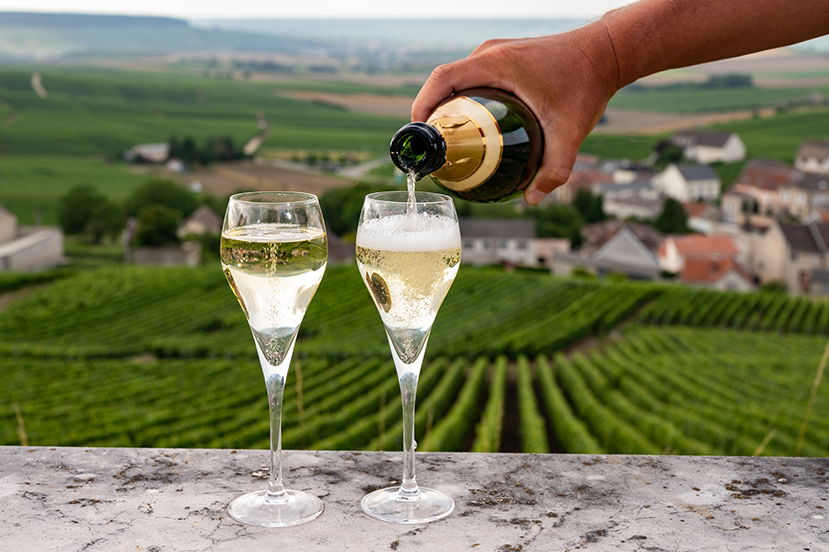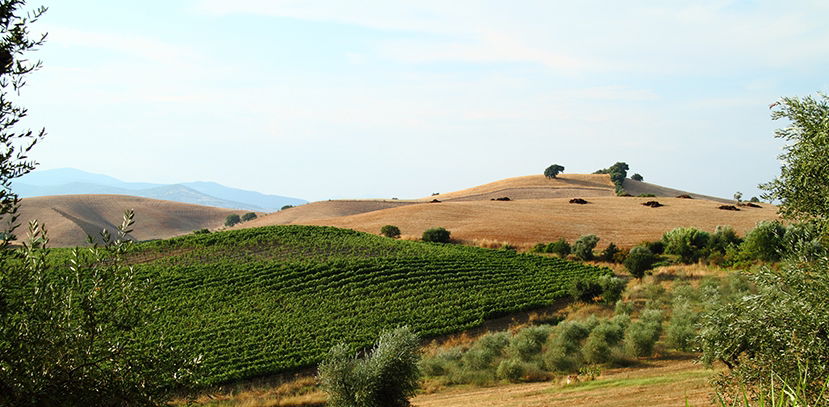BLOG
La Côte des Bar - the Unsung Hero of Champagne
Harriett Gifford Regional Spotlight

North vs. south
For over a century, the unanimity of the Champagne region has been called into question. Separated by departmental lines (départements being administrative regions in France), the Côte des Bar in the southern Aube department was often considered as that distant cousin who always embarrasses themselves at parties. The big houses of “mainland” Champagne in the northern Marne department did indeed buy loads of grapes from
the smaller producers in the south, however some were reluctant to allow them to make their own Champagne. It was the snobbery of Reims during the 1908 classification that tried to oust them all together from the Champagne delineation. The winemakers of Aube protested the decision, obtaining a “secondary Champagne classification” (Champagne deuxième zone) in 1911. Eventually, in 1927 the establishment conceded and accepted the Côte des Bar into the AOC Champagne, yet deprived of any premier or grand crus.

The Côte des Bar's location
Closer to Burgundy at heart
The independence of the Côte des Bar from the rest of Champagne is more than geographical. The winemakers of Aube often say they feel closer in spirit to their Chablisian neighbors in Burgundy than they do with the rest of Champagne. The sense of camaraderie felt between the Côte des Bar and Chablis is also rooted in their shared terroir: the vein of Kimmeridgian limestone and marly clay that runs through both regions. This special subsoil gives the southern champagnes an exceptional minerality, producing grapes which are both voluptuous in fruit, whilst maintaining a bright acidity. Being further south, the Côte des Bar also experiences a warmer climate, creating less astringency in the wine and therefore less need to add the liqueur de dosage (the dosage of sugary wine added at the end of the méthode champenoise). Domains such as Vouette et Sorbée in Buxières-sur-Arce produce only zero dosage / brut nature cuvées, relying on the natural maturity of the grapes to balance the wine.

The gentle sloping hills of the Côte des Bar, of which 85% is planted with Pinot Noir
The home of blanc de noirs and rare varieties
Blanc de Blancs can be heard ringing from the wineries in northern Champagne, marketed as the epitome of elegance and refinement when choosing a champagne. However, the Côte des Bar has its mirror opposite: the Blanc de Noirs. As a region planted predominantly with Pinot Noir, many winemakers choose to create 100% pinot noir champagnes. Emile Fleury, of Domaine Champagne Fleury, was the first in the region to graft Pinot Noir vines to American root stock after Phylloxera ravaged the Champagne vineyard at the end of the nineteenth century. This reignited the tradition of growing pinot noir in the Côte des Bar. Although blends including different varieties can also be found here, the high quality and quantity of Pinot Noir is preferred. This gives way to wines with rich structure and full fruit flavors compared to the more citrusy and biscuit notes of a 100% Chardonnay Blanc de Blancs.
Always a leader in experimentation, alongside Pinot Noir, Chardonnay, and Meunier, the Côte des Bar is home to an increasing hectarage of Pinot Blanc, Pinot Gris, Arbane, and Petit Meslier. Winemakers of the region are incorporating them more frequently into their blends as well as creating distinctive mono-varietal cuvées. Notably, Olivier Horiot in Les Riceys has revived the rarest grape variety in the region. His 100% Arbane cuvée captures the unique expression of an almost extinct variety.
The birthplace of biodynamics
Among the early pioneers in France, Domaine Champagne Fleury in the village of Courteron were the first to bring biodynamic winemaking to the vines of Champagne in 1989. Through experimentation and belief to go beyond the status quo, Jean-Pierre Fleury adapted the biodynamic philosophy of Rudolf Steiner and Maria Thun with hopes to achieve a more true expression of terroir and to protect the biodiversity of the land. Since the late eighties, many other winemakers have followed their example, taking forward the spirit of innovation within the Côte des Bar.
Champagne is most known for creating consistency through its wines and maintaining a distinguishable tasting profile from year to year. However, the winemakers of the Côte des Bar prefer to embrace individuality, and more frequently make single-year vintaged wines. Using biodynamic principles, Domain Marie Courtin in the village of Polisot pay hommage to Pinot Noir by letting each cuvée resonate independently from one year to the next.

The village of Les Riceys
Still red, white, and rosé wines
Sparkling wine is not the only product of Champagne. Whilst certainly rare, red, white, and rosé still wines can be found across the region. Known as Coteaux Champenois, these wines are becoming more ubiquitous in the Côte des Bar, owing to the ripeness of the grapes grown. Although most commonly found as a red wine, wineries such as Domain Fleury produce red, white and rosé still wines. Their Coteaux Champenois Blanc uses 100% rare Pinot Blanc vinified in amphorae and oak barrels, creating a cuvée that is both buttery, mineral, and full of tangy citrus fruits.
The village of Les Ricey, situated in the most southernly corner of Champagne, holds the surprising AOC Rosé des Ricey. Here, a select few winemakers make still rosé wine from Pinot Noir, through semi-carbonic maceration aged in steel or oak barrels. Olivier Horiot is one of the few to produce under this minuscule appellation. His rosé des Ricey is lightly tannic and bursting with fresh red berries and smoked spice.
The Côte des Bar will forever remain at physical distance from the rest of Champagne. Throughout its history to date the region cherishes its autonomy and upholds a creative ethos. Nevertheless, despite this detachment, “Champagne" is what is written on the bottle, and Champagne it is! Producing distinguished balanced wines, with many producers here pioneering winemaking that works to protect the environment, the Côte des Bar is a key feather in the cap of Champagne.



